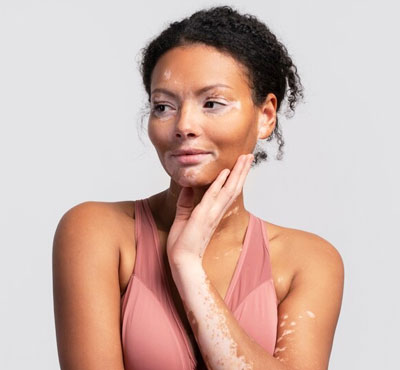Understanding Vitiligo Surgery
Vitiligo surgery involves the manual transplantation of melanocytes or pigmented skin onto depigmented lesions to restore normal skin colour. It is the common practice that it is advised in cases of stable vitiligo where the vitiligo condition has not advanced in at least 6-12 months. The surgery aims to:-
- Restore pigmentation in affected areas.
- Improve aesthetic appearance and boost self-confidence.
- Provide long-lasting results when combined with medical therapies.
Types of Vitiligo Surgery
At the dermatological centre Dermavision - The Skin Clinic, it is possible to perform denaturing surgical techniques adapted to the individual patient and the level of depigmentation of the area treated.
Punch Grafting
This comprises the excision of the very small grafts of skin from a donor area (i.e., the thigh) and transplantation to the depigmented areas. Grafts over time become pigmented, integrate with the overlying skin and disintegrate.
Split-Thickness Skin Grafting (STSG)
In this technique, a superficial layer of skin is surgically excised from a donor site, and it is transplanted on depigmented areas. This method is ideal for treating larger patches.
Suction Blister Grafting
Using suction, it is possible to induce blisters on the donor site, and the blister roof is transplanted to the depigmented site of the anatomy. It minimizes scarring and is suitable for smaller patches.
Melanocyte Transplantation
Synonym to non-cultured epidermal suspension transplantation, this advanced technique is the personalization of melanocytes from the patient's skin, which are grafted to depigmented sites after site preparation.
Tattooing (Micro-pigmentation)
Where surgical grafting is not possible micro pigmentation can be used to deposit pigment into the skin thereby recreating the skin's natural coloration.
Who is Eligible for Vitiligo Surgery?
Surgical intervention is not suitable for all vitiligo patients. It is necessary to meet some conditions so that the outcome will be successful.
Ideal Candidates
- Patients with stable vitiligo for 6-12 months (no new lesions and/or lesion enlargement).
- Patients with localized or segmental vitiligo.
- Individuals who have not responded adequately to medical treatments.
- People with a realistic approach to procedure and outcome.


